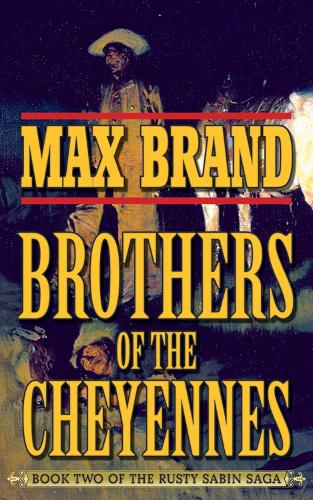
Brother of the Cheyennes: Book Two of the Rusty Sabin Saga
(Paperback)
Publishing Details
Brother of the Cheyennes: Book Two of the Rusty Sabin Saga
By (Author) Max Brand
Skyhorse Publishing
Skyhorse Publishing
1st October 2013
United States
Classifications
General
Fiction
813.52
Physical Properties
Paperback
248
Width 140mm, Height 210mm, Spine 140mm
326g
Description
Rusty Sabin was born to white parents but brought up by the Cheyenne Indians, who named the redheaded boy Red Hawk. His ability to heal the sick and to make strange magic is widely honored throughout the tribe. But in his twenties, Red Hawk sets out to take his place among white people. When Rusty and his stallion White Horse are nearly at the frontier post of Fort Marston, the river boat hes riding is grounded, and a man called Bill Tenney comes to his rescue.
Rusty doesnt know much about the white mans waysespecially a white man like Bill Tenney, a thief and a fugitive. Tenney is only interested in one thingRustys white stallion, considered sacred among the Cheyennes. Meanwhile Major Marston is determined to come between Rusty and his sweetheart, Maisry, and the Cheyennes do all they can to compel Rusty to return to his tribe.
First serialized in 1934, Brothers of the Cheyennesthe second installment of the Rusty Sabin trilogycemented Max Brands reputation as one of the most exciting and talented writers working in the Western genre. To this day, Rusty Sabin remains an indelible American character, caught between two worlds and simply trying to do the right thing.
Reviews
Brand practices his art to something like perfection.
Max Brand is the Shakespeare of the Western range.
"Brand practices his art to something like perfection."
"Max Brand is the Shakespeare of the Western range."
Author Bio
Max Brand is the best-known pen name of Frederick Faust, creator of such beloved characters as Destry and Dr. Kildare, among others. Eighty motion pictures and many radio and television programs have been based on his work. Faust went to Italy as a war correspondent during World War II after the United States entered the conflict, and he was killed during a night attack on a hilltop village held by the German army. His literary output was so prolific during his life that he averaged three new books per year for seventy-five years, including many years after his death.
